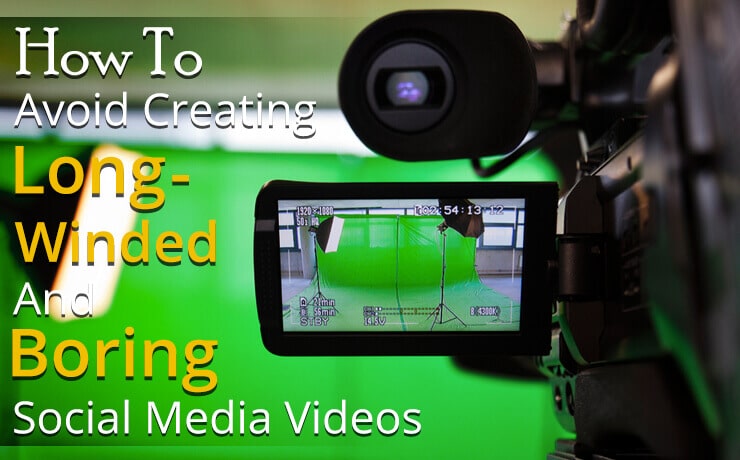How To Avoid Creating Long-Winded And Boring Social Media Videos

Chad Faith
Director of Content

When was the last time you watched social media videos? Today, the popularity of video content continues to increase on social media platforms. What’s more, they are mostly viewed via mobile devices. Recent research has shown that people love watching Facebook Live videos and Instagram videos on a daily basis. If you want to create engaging videos, one of the questions you may ask yourself is: where do you start? Let’s find out more!
Brainstorm for Ideas
There are several ways to brainstorm ideas for your videos. Let’s start by looking at your blog. Assuming that you maintain one, you will likely have a wide variety of content ideas to choose from. You should choose top blog posts that resonate well with your audience. They can serve as great content for your videos.
Another good place to look for ideas is Facebook’s Pages to Watch. From there, you will be able to check out the top posts from your favorite Facebook pages. If you are on Instagram, don’t forget to make use of the Explore feature. Alternatively, you may learn from similar brands’ marketing strategies. You do not have to copy what they are doing, but just keep an eye out for current themes, trends, etc.
Your videos can feature:
- User-generated content
- Lists
- Product launches
- Behind-the-scenes
- Event recaps
- Customer testimonials
- Tutorials, how-to’s and general tips
Start Planning for Your Chosen Ideas
After brainstorming your content ideas and selecting the best option for your needs, you can start planning for it. You can start the ball rolling by creating a storyboard or writing a script. These methods are designed to help you think through the important aspects of the video and its flow. If you need help with visualizing how a shot would look like, a storyboard will come in handy. Below are other important aspects of the planning phase you have to cover:
- Video size: Over 50% of videos are now view through mobile devices. Vertical and square videos take up more screen space than their landscape counterparts, especially when the phone is held in a vertical position. Research has shown that square videos outperformed landscape videos on Twitter, Instagram, and Facebook.
- Enable sound on/off function: As more people are watching mobile videos everywhere—during their commute, work, or home—they would prefer watching videos that can play without sound. Look at Facebook. 85% of their videos are playable without audio. You can consider adding captions and subtitles to narrate your story visually.
- Deliver a concise message: Start asking yourself what is the most important message you need to deliver to your audience. The duration of your videos play a major role in attracting views. Consider keeping them short and sweet, e.g. 15-second videos. You may also wish to leverage the auto-play capabilities of social media platforms. If you can capture attention within the first few seconds of your video, chances are the user will stop scrolling and watch your video.
The Actual Shoot
Now, you are ready to record! Thanks to the advancement of technology—such as smartphones—you can easily create high-quality and engaging videos with just a few simple techniques and tools.
- Find or create your video background
If you want your viewers to focus on you and not get distracted by various elements in the background, go for a simple colored background.
- Use your smartphone
Today, you do not need expensive video equipment to film a video. Most smartphones can record videos with high audio and visual quality.
- Speak into a microphone
To improve the sound quality of your videos, it is best to record it in a quiet location. If you are unable to do so, consider using a lavalier microphone.
- Find good lighting
One of the best light sources for videos is natural light. An alternative solution is a lamp. Make sure to face the light source in a way that allows light to spread evenly across your subject’s face.
 Free
Consultation
Free
Consultation Free
Google Ads Audit
Free
Google Ads Audit







